Visually more sophisticated than its aluminium stable mate how do the two Wilson’s compare on performance terms?
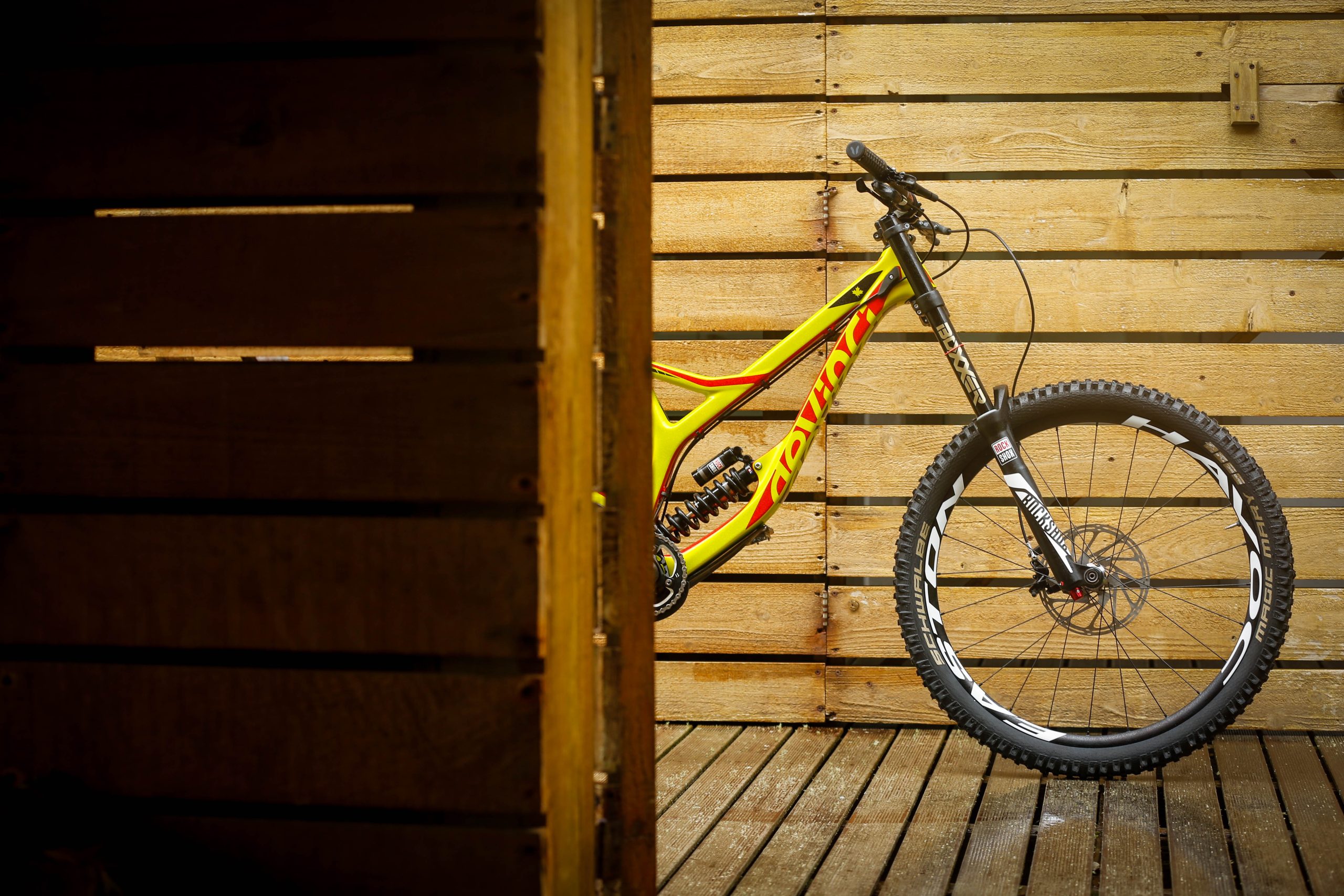
Devinci. Quebec. Great bikes, crazy cold climate. But warm and genuine people run this relatively small business and in Steve Smith they had an incredible racer who has won them the world cup downhill series on the previous version of this bike. A bike that we have also had many great times on. Here we put the newly released carbon bike up against the aluminium version. Same geometry, same specification.
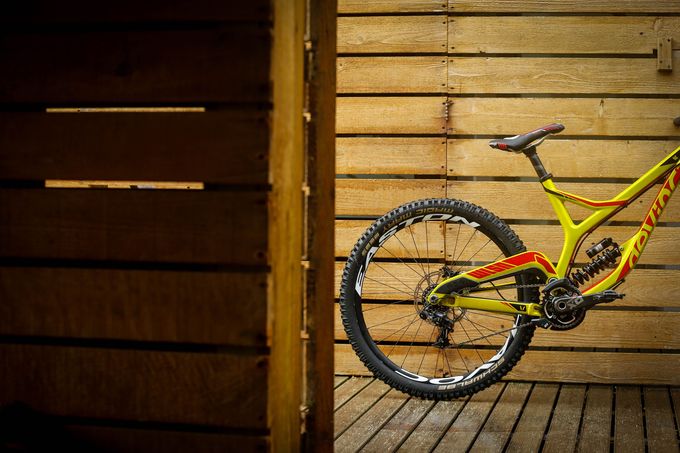
The only chassis difference between the carbon and aluminium Wilson is the material making the front triangle. Both Wilson bikes feature the carbon seat stay and aluminium chain stay and feature the Split Pivot suspension system, one which separates acceleration forces from braking forces. In terms of damper units we have 9.5×3.0 RockShox Vivid R2C rearwards with RockShox BoXXer World cup taking care of matters up front.
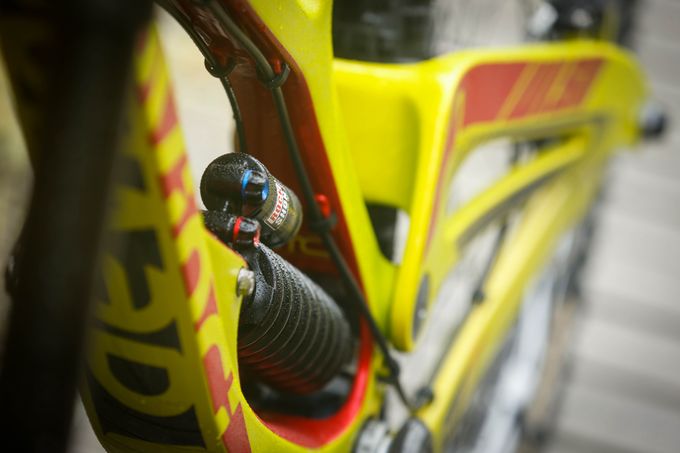
Devinci offer four size options and three colourways/specifications for the aluminium and carbon bikes and the prices are very competitive indeed. Cable routing is excellent and so to the build quality.
The aluminium front is, as Devinci explain ‘synergised’ with rear aluminium/carbon swingarm, whilst the asymmetric design is said to aid torsional stiffness. We wonder if they believe the same of the carbon front end. After all Devinci say it’s all about lighter, stiffer, stronger on both aluminium and carb versions to bolster pedalling out of the gate and across the flats, but to be honest we’re just happy with the great geometry on both bikes. More importantly here we were keen to see exactly what type of performance advantage, if any , that the carbon front triangle offers.

At £4399 for the aluminium bike (just over £2100 for the frame) and £5499 for carbon bike (£2999 frame) the Wilson can be closely compared to the Giant Glory and Nukeproof Pulse with an almost full Sram componentry set up. This is largely a good thing as they are good performers too.
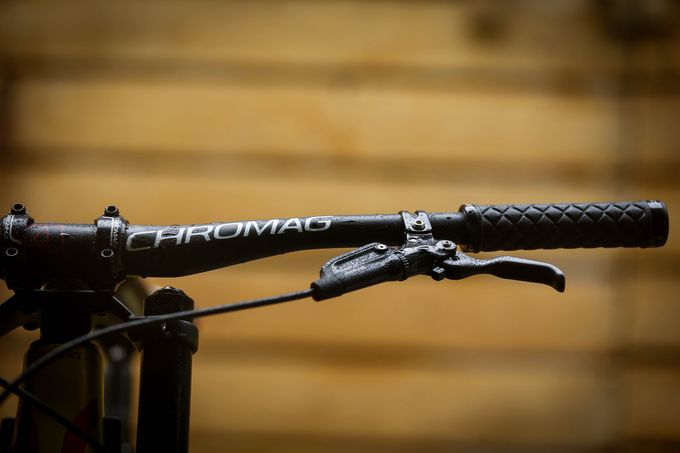
Both the top end Wilson SL’s are truly loaded with great gear from top to bottom. Sram X01DH, now a benchmark for us in terms of gearing, is reliable, light and silent. On the anchors the Sram Guide Ultimate have proved to be the best brakes by far this year and the Easton Havoc wheelset on both bikes are tough customers. Schwalbe Magic Mary Vert Star in Super Gravity takes some aggro to lose grip, they are immense.

An E13 LG1 with Taco bash, Chromag bar and stem on the carbon Wilson (although our aluminium version initially came with a Truvativ Stevie Smith bar which we preferred) finishes matters.
There’s a definite zip about the carbon Wilson that’s inspiring to behold, this becomes especially noticeable in flatter grounds with earth and root where changes of direction are crisp and the silence from the bike is impressive. The carbon has little cable rattle internally or externally. The suspension dynamic is a real treat, lively, and pushing through just when the impacts become too much to handle.
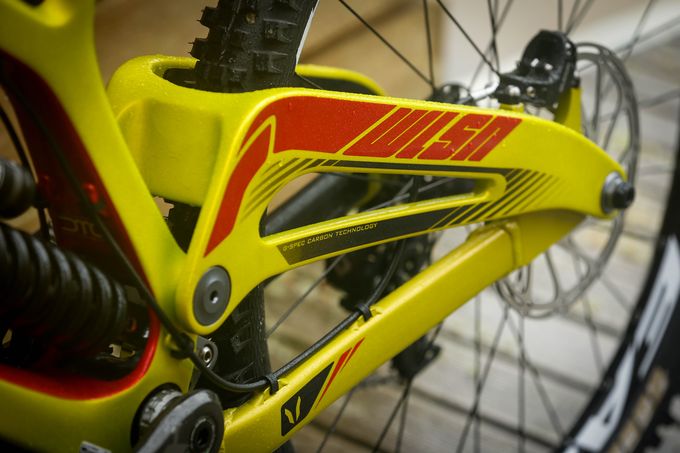
In comparison the aluminium Wilson has a quite different vibe to its bones, softer up front, not quite as crisp when it comes to moving the bike around on track. But similar obviously to the carbon bike, the same beautiful shape that we’ve become used to with the low swooping top tube of the Devinci which allows for excellent body positioning. You can feel the low centre of gravity on this bike and the angles are pretty much perfect, a reasonably low bottom bracket driving a standard 63 degree head angle. The ride height is excellent when matched with that magic sub 350mm bottom bracket.
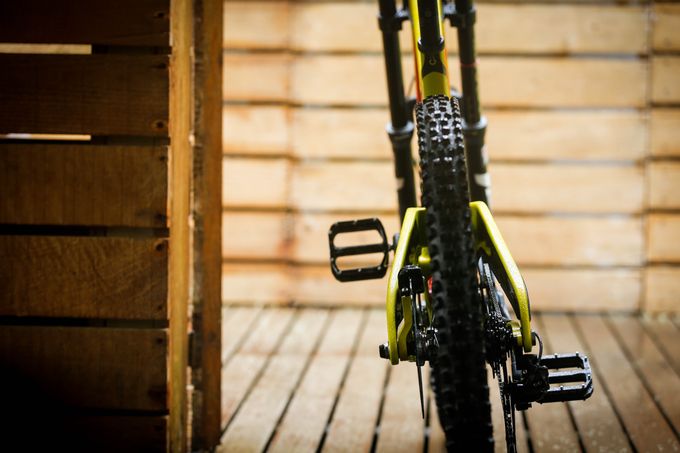
Moving into faster, rockier, steeper terrain the different nature and feeling of the aluminium vs carbon becomes much more noticeable. There appears to be far better flex/stiffness balance to the aluminium bike whereas the carbon bike gets bounced around and suffers from deflections easier. At higher speeds in rougher grounds the aluminium bike is much more comfortable and this will only become exacerbated over longer tracks. We even went as far as putting the same fork, wheels, bars, tyres on each bike to make sure about this. In short the carbon bike feels a shade too stiff. It also backed up some of the sensation we felt out in the mid Atlantic island of the Azores during the launch of the bike, where some of the well set root made for quite a harsh ride.
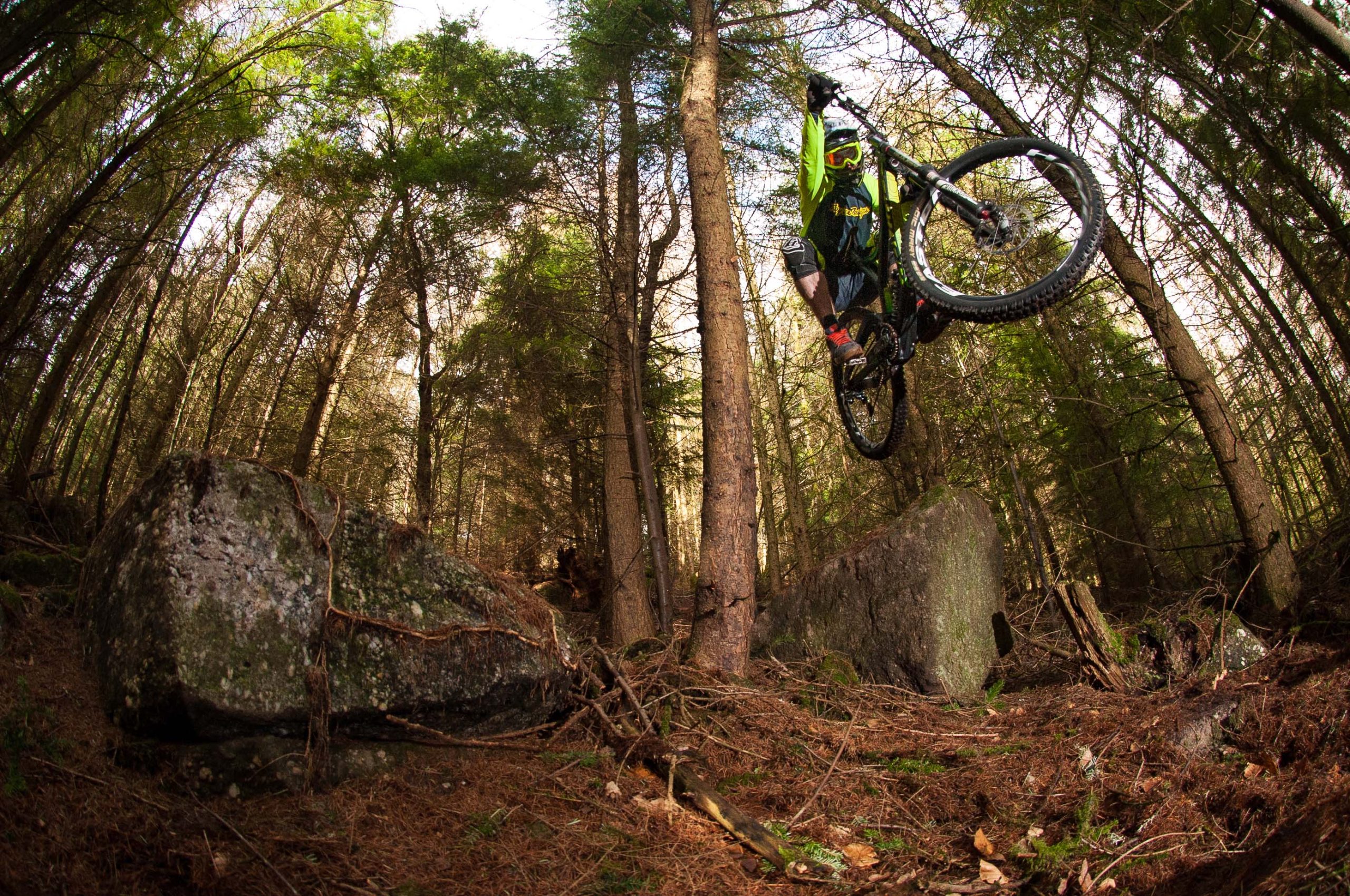

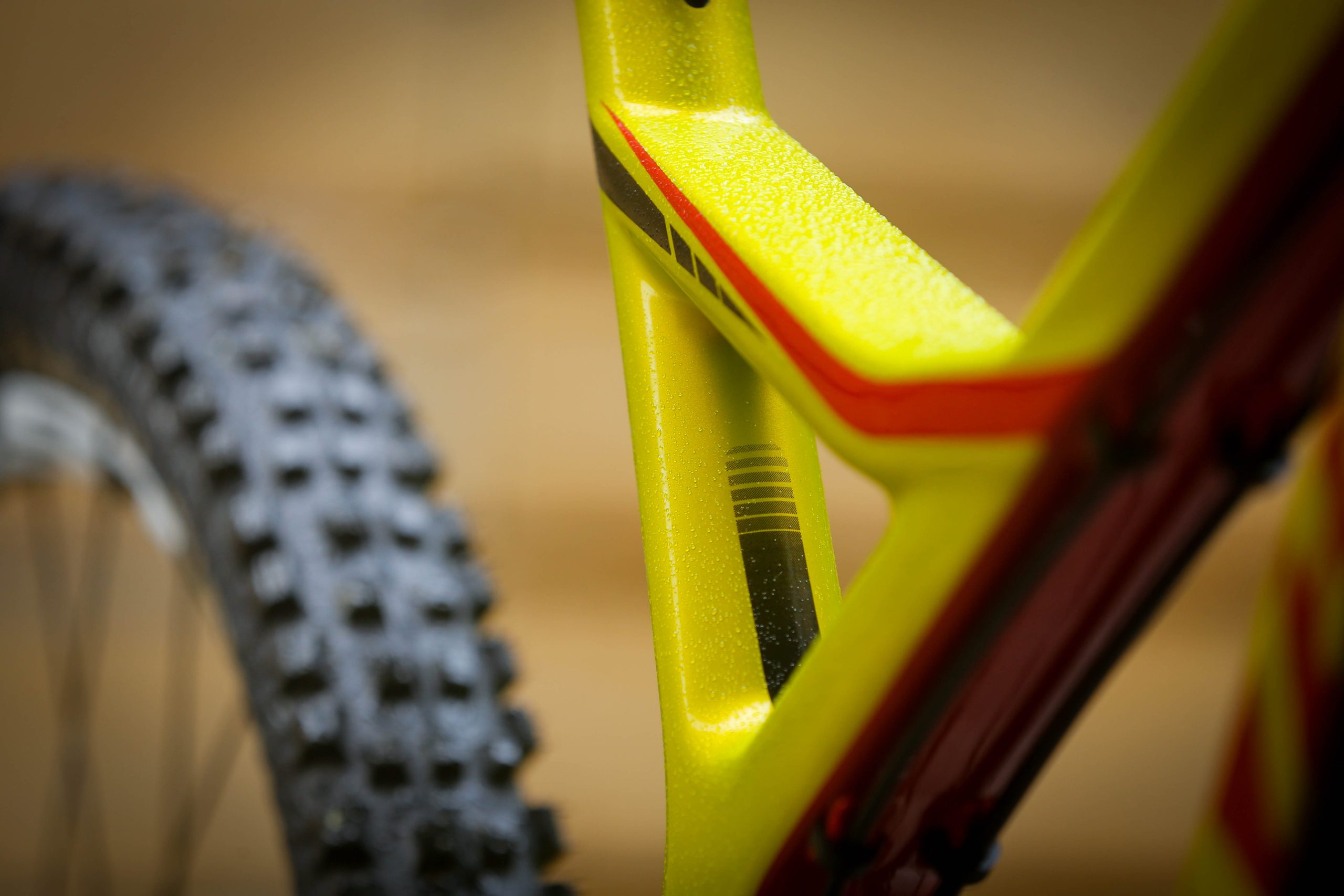
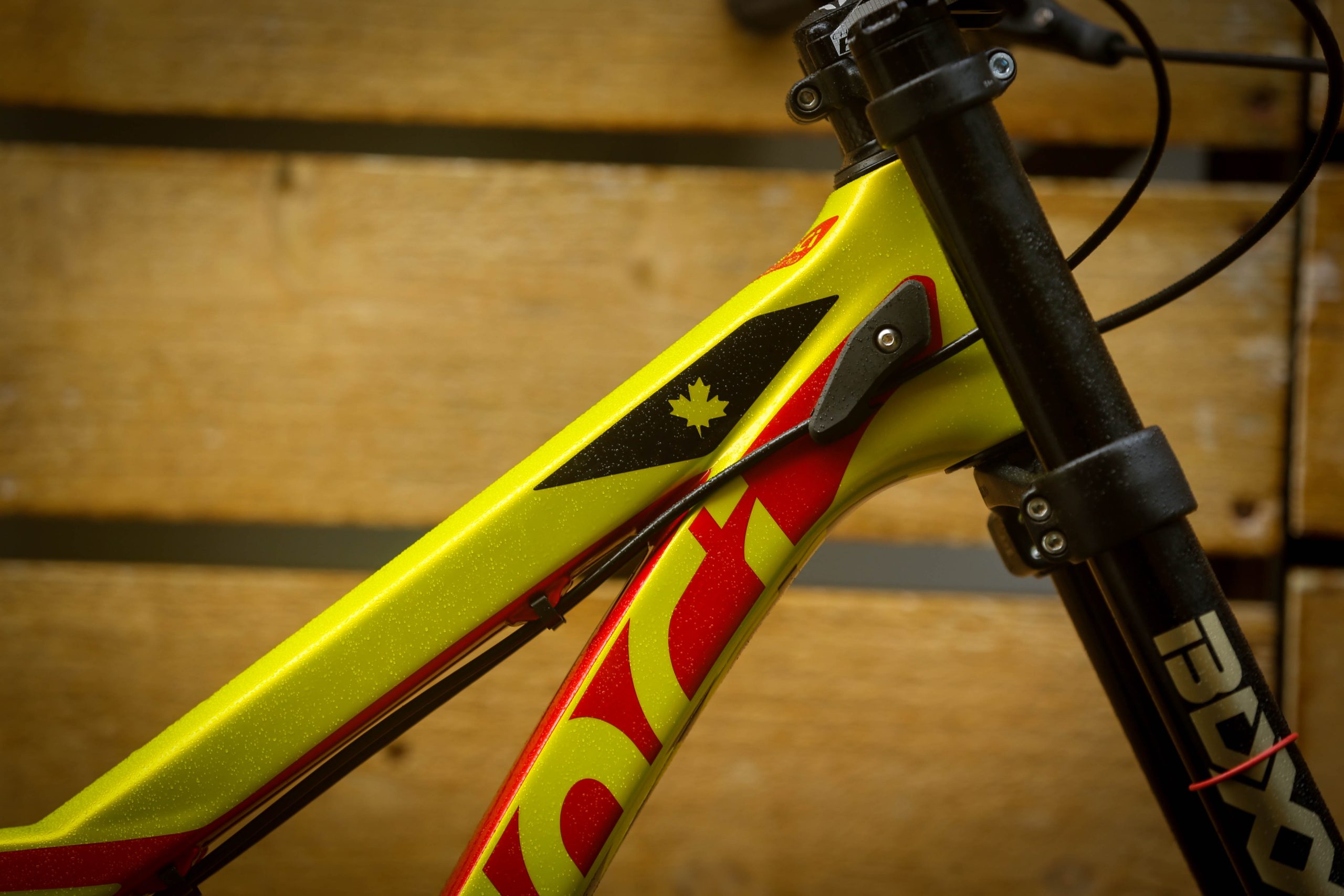
The large Wilson is a touch on the small side but the extra large is pretty good for a six foot rider. (Note: We include this sentence so that riders can make an assessment of their own particular size using this as a base). Yes its still a shade short compared to an extra large Demo or the benchmark Giant Glory but its good, well…. good for six foot at least. And that’s pretty much it as far as weakness goes. And the fact that the carbon front end strength could well be its weakness.
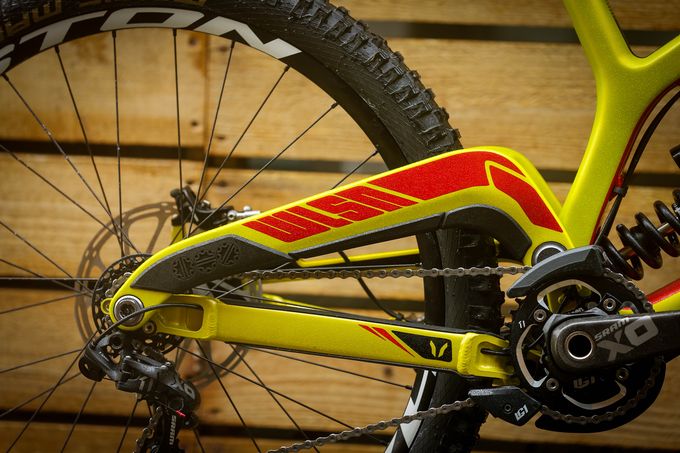
The Wilson has real poise, a good pace and a chassis that allows full body movement. Its easily in our top ten at the moment. But it’s the aluminium bike that we would choose over the carbon version. Sadly we seem to be revisiting old ground with this as this was exactly the same conclusion that we came to a few years ago with the 26” version. We simply feel the carbon front end to be too stiff at the moment.
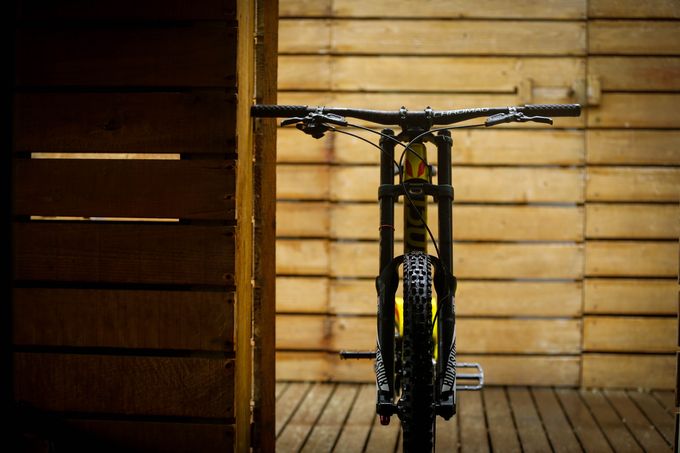
At roughly the same weight and over a thousand pounds cheaper the aluminium Wilson is our choice, its not as pretty or maybe as quick in some situations, but overall it has a more forgiving chassis characteristic. Having said that the carbon bike is competitively priced as a complete.
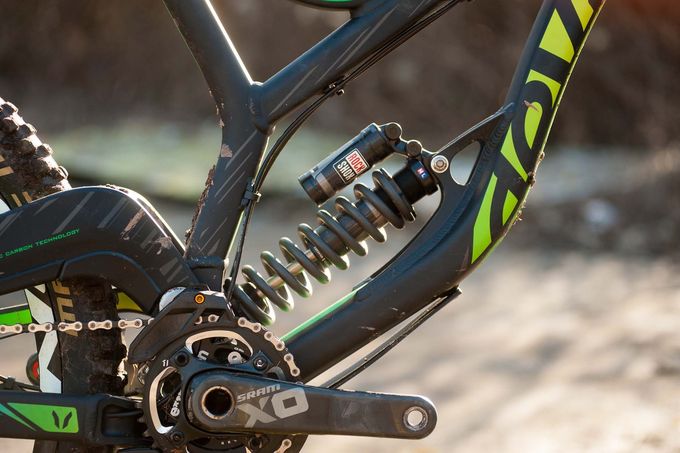
Where does it stand in comparison with other bikes? Its less expensive, lighter, and has a better shape than the Nukeproof Pulse but doesn’t quite have the poise of the Giant Glory but is very much a strong mid table performer in our top ten listing of downhill bikes.
Wilson carbon SL – £5499
Wilson carbon RC – £4199
Wilson carbon XP – £3499
www.devinci.com
